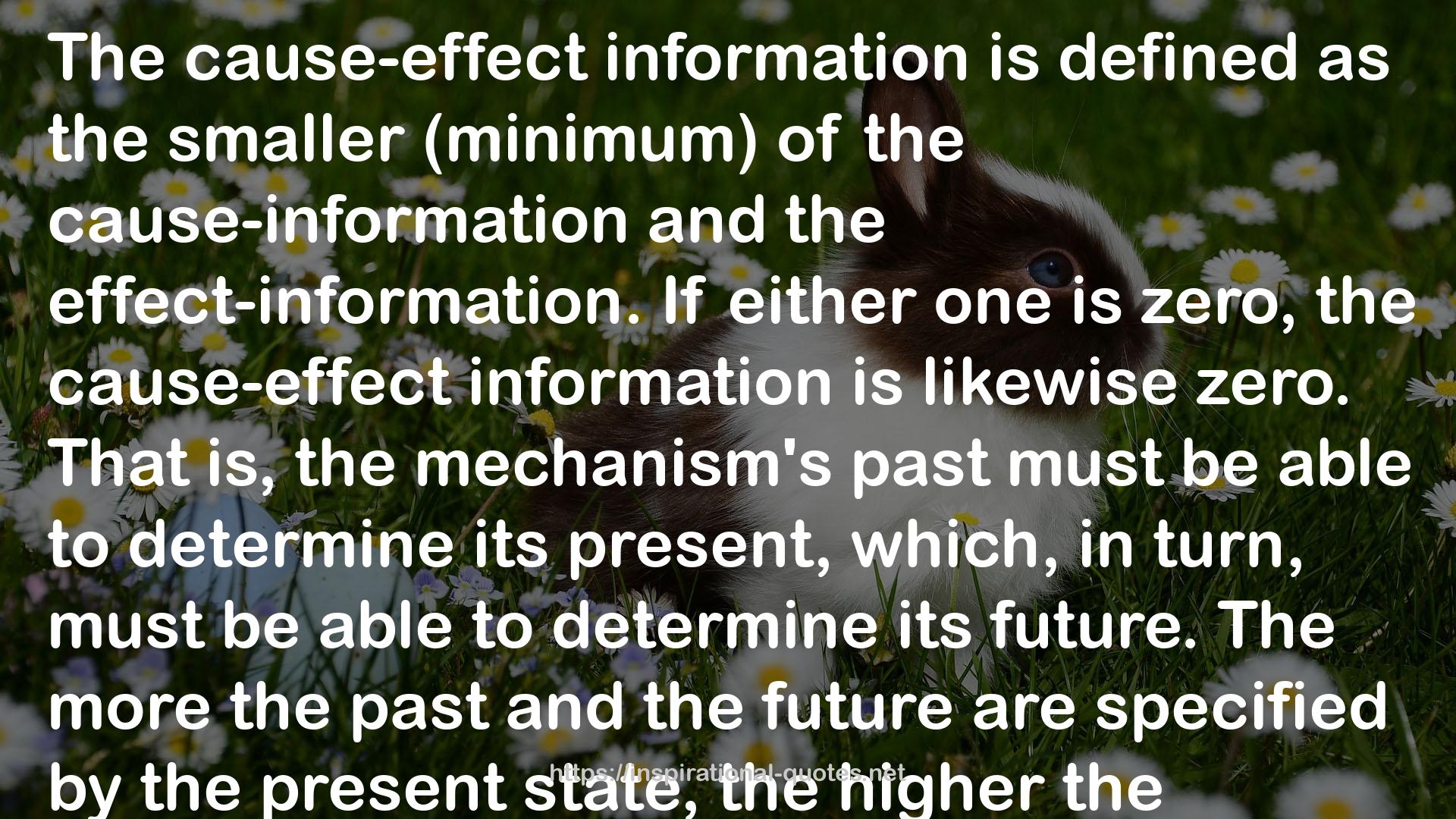" The cause-effect information is defined as the smaller (minimum) of the cause-information and the effect-information. If either one is zero, the cause-effect information is likewise zero. That is, the mechanism's past must be able to determine its present, which, in turn, must be able to determine its future. The more the past and the future are specified by the present state, the higher the mechanism's cause-effect power.
Note that this usage of 'information' is very different from its customary meaning in engineering and science introduced by Claude Shannon. Shannon information, which is always assessed from the external perspective of an observer, quantifies how accurately signals transmitted over some noisy communication channel, such as a radio link or an optical cable, can be decoded. Data that distinguishes between two possibilities, OFF and ON, carries 1 bit of information. What that information is, though - the result of a critical blood test or the least significant bit in a pixel in the corner of a holiday photo - completely depends on the context. The meaning of Shannon information is in the eye of the beholder, not in the signals themselves. Shannon information is observational and extrinsic.
Information in the sense of integrated information theory reflects a much older Aristotelian usage, derived from the Latin in-formare, 'to give form or shape to.' Integrated information gives rise to the cause-effect structure, a form. Integrated information is causal, intrinsic, and qualitative: it is assessed from the inner perspective of a system, based on how its mechanisms and its present state shape its own past and future. How the system constrains its past and future states determines whether the experience feels like azure blue or the smell of wet dog. "
― Christof Koch , The Feeling of Life Itself: Why Consciousness Is Widespread But Can't Be Computed
